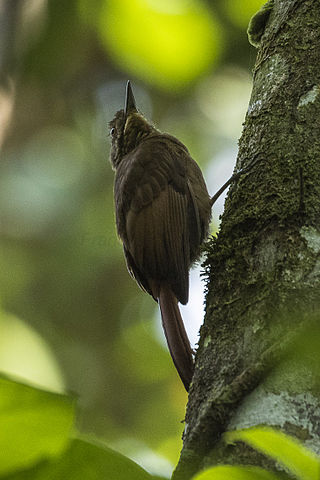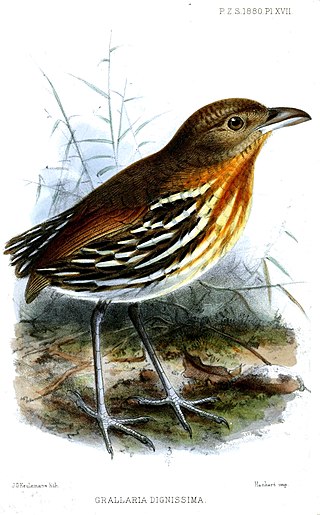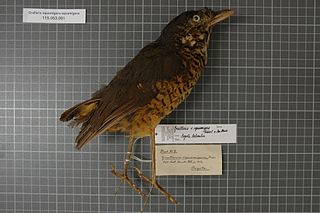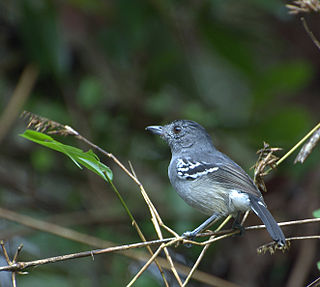
The black-faced antthrush is a species of passerine bird in the family Formicariidae. It is found in Central America from Honduras through Panama, on Trinidad, and in every mainland South American country except Argentina, Chile, Paraguay, and Uruguay.

The jocotoco antpitta is an endangered species of bird in the family Grallariidae. It is found in Ecuador and Peru.

The Tachira antpitta is a Critically Endangered bird species in the family Grallariidae. It is endemic to Venezuela.

The tawny-winged woodcreeper is a passerine bird in subfamily Dendrocolaptinae of the ovenbird family Furnariidae. It is found in Belize, Costa Rica, Guatemala, Honduras, Mexico, Nicaragua, and Panama.

The rufous-breasted antthrush is a species of bird in the family Formicariidae. It is found in Colombia, Costa Rica, Ecuador, Panama, Peru, and Venezuela.

The moustached antpitta is a Vulnerable species of bird placed in the family Grallariidae. It is found in Colombia and Ecuador.

The ochre-striped antpitta is a species of bird in the family Grallariidae. It is found in Colombia, Ecuador, and Peru.

The elusive antpitta is a species of bird in the family Grallariidae. It is found in Brazil and Peru.

The great antpitta is a Near Threatened species of bird in the family Grallariidae. It is endemic to Venezuela.

The yellow-breasted antpitta is a species of bird in the family Grallariidae. It is found in Colombia and Ecuador.

The scaled antpitta is a species of bird in the family Grallariidae. It is found in Bolivia, Brazil, Colombia, Costa Rica, Ecuador, El Salvador, Guatemala, Guyana, Honduras, Mexico, Nicaragua, Panama, Peru, Trinidad and Tobago, and Venezuela.

The white-bellied antpitta is a species of bird in the family Grallariidae. It is found in Colombia, Ecuador and Peru.

The chestnut-naped antpitta is a species of bird in the family Grallariidae. It is found in Colombia, Ecuador, and Peru.

The chestnut-crowned antpitta is a species of bird in the family Grallariidae. It is found in Colombia, Ecuador, Peru, and Venezuela.

The undulated antpitta is a bird in the family Grallariidae. It is found in Bolivia, Colombia, Ecuador, Peru, and Venezuela.

The variegated antpitta is a species of bird in the family Grallariidae. It is found in Argentina, Brazil, Colombia, the Guianas, Paraguay, Peru, and Venezuela.

Watkins's antpitta is a Near Threatened species of bird in the family Grallariidae. It is found in Ecuador and Peru.

The Andean tit-spinetail is a species of bird in the Furnariinae subfamily of the ovenbird family Furnariidae. It is found in Bolivia, Colombia, Ecuador, Peru, and Venezuela.

The russet-bellied spinetail is a Vulnerable species of bird in the Furnariinae subfamily of the ovenbird family Furnariidae. It is endemic to Peru.

The variable antshrike is a species of bird in subfamily Thamnophilinae of family Thamnophilidae, the "typical antbirds". It is found in Argentina, Bolivia, Brazil, Paraguay, Peru, and Uruguay.























